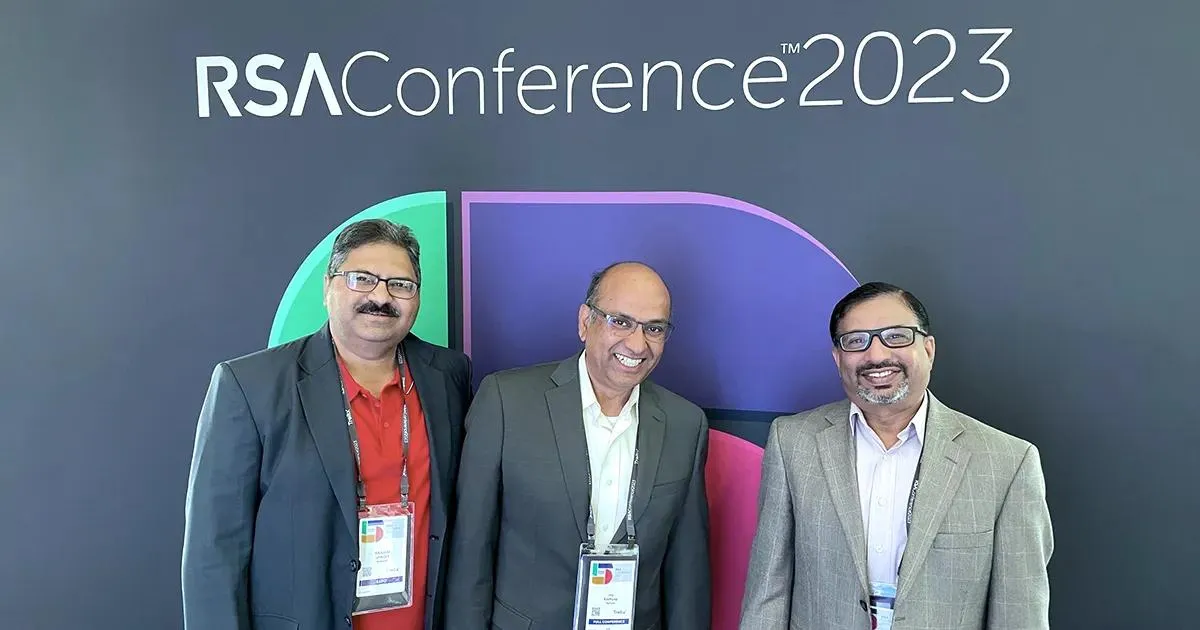



Over the past decade, businesses have dramatically evolved their approach to handling technology. Once considered merely an enabler of business, digital capabilities are now seen as a key driver of value across the business landscape.
And this change has been accelerating. Even up until 2020, enterprise leaders focused their attention on leveraging technology primarily for their customer-facing initiatives. However, the COVID-19 pandemic widened the footprint and illustrated impact that technology could make in the workplace as companies transitioned into a remote work mode.
But apart from the opportunities, this change exposed the modern digital organization to new threats also.
With studies pointing out that nearly 32.6 million people will be working full-time remotely in the US alone, the remote work culture may well be heading into the preferred mainstream mode of working.
But Are Companies Ready on All Fronts?
Thanks to digital tools and services, employee productivity, work-life balance, cost of operations, and most major areas have shown positive transformations over the past couple of years with remote work. But have enterprises really solved one of the most fundamental challenges in enabling remote work with digital power? We are talking about security in the digital space, especially on the work front.
Surveys have pointed out that over 72% of enterprises globally have indicated concerns about security challenges in remote work. Are traditional firewalls and security policies enough to hold off threats in a remote-first workplace?
Experts do not believe so, and this is evident from reports from across the globe pointing to increased threat activity on remote workers. They are vulnerable endpoints through which cybercriminals can enter corporate networks and trigger bigger threat events.
The key challenge that enterprises face is not associated with having the right tools or policies, but it has more to do with not encouraging a work culture that imbibes security as a fundamental pillar.
The attack on a multinational digital communications technology conglomerate networks in May of 2022 was a classic example of this scenario. Ransomware attackers were able to breach the security measures courtesy of a compromised personal Google account synced with passwords.
How Do We Establish Security as a Cultural Foundation?
The need for enterprises to perceive security as an integral cultural aspect of the workforce is bigger than ever in the face of new workplace trends like remote and hybrid work. On this note, let us explore four tips that decision-makers can leverage to truly imbibe a culture of security across the workplace:
Foster an Ownership Attitude for Security
Enterprises are known for coming up with harsh measures that usually target employees and punish them for lapses in security. This model must change when employees are exercising more autonomy in their work mode.
Rather than laying out punishments for lapses, steps must be taken to make employees feel proud about securing their own assets. The best way to do so is to establish a clear line of ownership for their digital assets in the workplace.
Employees can be rewarded for their attempts to work securely and given platforms where they can proudly present their achievements in thwarting threats. Rather than having IT as the owner or custodian of security practices, empower employees to own up to the responsibility of securing their devices, tools, and other digital assets and perform regular security audits.
Make Security Compliance a Foundational Element
Businesses introduce new digital tools or services for their employees after first setting up processes that power those operations. By building these processes around security compliance norms, it becomes easy to nurture compliance at the root level.
For example, consider the process of accessing any digital asset. The process can be weaved in such a way as to ensure that every instance of a login is guarded by a two-factor authentication mechanism. This will help people become accustomed to compliance mechanisms without much hassle.
Continuous Training and Awareness
Security threats in the digital landscape evolve fast. Even criminals are now deploying state-of-the-art artificial intelligence and machine learning-powered mechanisms to infiltrate firewalls and safety guardrails.
While modern security tools will have updated information on combating such threats, it is equally important for employees to be aware of their roles in staying one step ahead of threat agents. This can be achieved by continuous learning and awareness programs conducted by either IT teams or external security consultants. It will help combat threats like new phishing attacks or malware attacks on smartphones and much more.
Equip People with the Right Tools
Having the right tools is a key component of successful defense strategies that organizations can deploy against threats targeting the workplace. They should be considered as a support ecosystem that blends with and complements human vigilance against threats. Modern tools will be an additional layer of security rather than replacing human oversight on the enterprise security landscape.
Prevention is the Best Cure
With the threat landscape evolving almost daily, it is imperative that businesses safeguard their digital assets at the earliest to prevent any mishaps. The new normal of working demands heightened focus and energy from leaders on implementing security best practices for internal operations.
There is limited or no scope for erroneous decisions when it comes to securing your enterprise’s digital landscape. This is where partnering with a security leader like Xoriant should be one of your top priorities. Get in touch with us to know more.






 View Previous Blog
View Previous Blog






